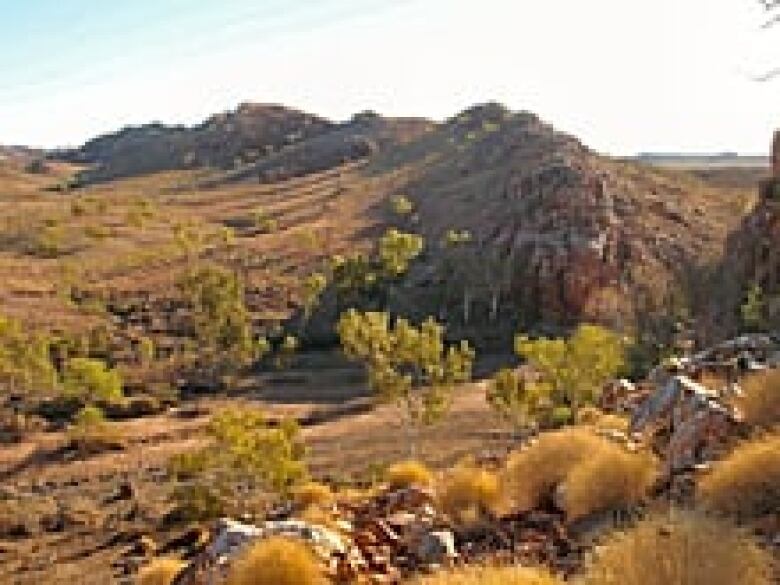'Oldest' fossils reveal life 3.4 billion years ago
Sulphur-eating bacteria lived in hot, oxygen-poor early ocean

The preserved cell walls of bacteria that lived in oceans without oxygen 3.4 billion years ago are believed to be the oldest fossils ever found, Australian and British scientists claim.
The microscopic fossils were foundin Western Australia among belts of layered rock 3.3 billion to 3.5 billion years old, said a study led by David Wacey at the University of Western Australia and published Sunday in the journal Nature Geoscience.
The fossilswereembedded in a sandstone layer from a shallow-water beach that represents one of the Earths oldest preserved shorelines.
"At last we have good, solid evidence for life over 3.4 billion years ago," Martin Brasier, an earth sciences professor at Oxford University in the U.K. who co-authored the study, said in a news release describing the findas "the oldest fossils on Earth."
The apparent fossils are 200 million years older than similar fossils found in a similar environment, butroughly 65 million years youngerthan rock features found in 1993 byUniversity of California, Los Angeles paleobiologist J. W. Schopf that he claimed as the oldest fossils.
Brasier alleged in a 2002 paper published in Nature that a reanalysis by him and his colleagues suggested that Schopf's discovery did not represent fossils, but features produced by non-biological chemical processes. Schopf has since made a number of public statements defending his claim.
'Could these sorts of things exist on Mars? It's just about conceivable.' Martin Brasier, Oxford University
Three and a half billion years ago, the oceans were a steamy40 to 50C. They churned with strong currents and covered most of the surface of the Earth, exposing very little land. Volcanic activity was violent and widespread, supplying large amounts of sulphur. Meanwhile, oxygen levels remained very low, largely due to the absence of plants and algae.
Bacteria that can draw their energy from sulphur instead of oxygen are common in volcanic environments today, and scientists had previously found rocks containing possible chemical evidence that sulphur-metabolizing bacteria existed almost 3.5 billion years ago.
However, the new discovery in the Strelley Pool rock formation represents the first fossils backing up that evidence.
The newly discovered fossils included cell-like structures all of a similar size that resemble previously discovered microfossils of bacteria that lived two billion years ago. They were found in clusters and chains similar to those formed by bacteria today. In addition, they were only found in a very particular environment within the rock layered black sandstone.
Sulphur waste
Contained in the cell walls and near the cell were tiny crystals of pyrite, a sulphur-containing mineral also known as fool's gold. The researchers suggested that these represented the waste generated by the bacteria as they drew energy from sulphur. They noted that modern-day bacteria that metabolize sulphur generate similar patterns of pyrite.

It is often difficult to confirm that apparent microfossils are signs of life rather than regular patterns formed by chemical processes in the absence of biology. However, the cell-like formations combined with the metabolic waste products taken together provide "strong evidence" of an ancient sulphur-based bacterial ecosystem, the paper said.
The researchers said they are now re-examining other rocks from a similar time period that have been proposed to contain evidence for life.
They suggested that similar bacteria may also be found in other parts of the solar system such as Saturn's moon Titan or Jupiter's moon Europa.
"Could these sorts of things exist on Mars? It's just about conceivable," said Brasier in a statement.
The techniques used in the new discovery on Earth may later be used to confirm the existence of such extra-terrestrial life, he added.












_(720p).jpg)


 OFFICIAL HD MUSIC VIDEO.jpg)
.jpg)



























































































